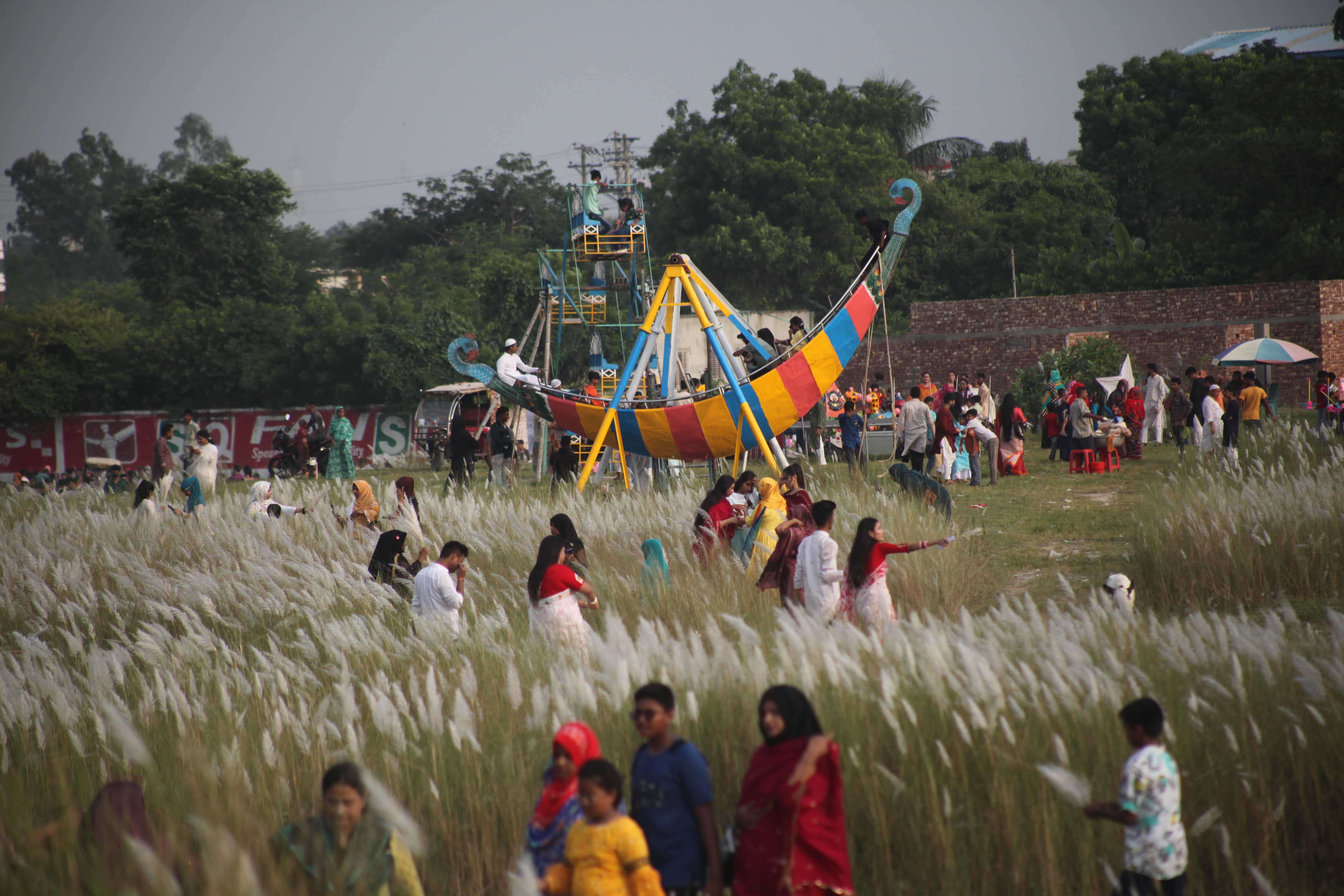The year I discovered the beauty of Bengal autumn…

Photo credit: Nazmul Islam
Back in my school days in the late '90s, I discovered the beauty of "Shorot"—Bangladesh’s or Bengal’s autumn—through a book by one of my all-time favorite writers, Shirshendu Mukherjee.
The book was titled "Parthib," and there was a character whose name I can’t recall right now. Shirshendu dedicated nearly two pages to this male character, who mused about the beauty of autumn in Bengal.
This character poetically described deep blue sky dotted with fluffy clouds, using the Bengali phrase "Shada Peja Tulo" (meaning white cotton) to encapsulate the essence of the season.
Shirshendu’s magical prose brought this description to life, instantly captivating me and making me eagerly anticipate the arrival of Shorot-kal.
At the time I read the book, it was likely mid-summer, and I was munching on my favorite Himshagar mango while engrossed in Shirshendu's masterpiece.

Honestly, before reading those lines in "Parthib," I had never given much thought to Bengal’s autumn. I was just 15, and if you asked any random urban Bangladeshi kid about their favorite season, they would probably shout, "winter," in unison.
Winter was synonymous with the end of annual exams and at least three weeks of vacation. It was also the time when relatives from abroad typically visited during their Christmas break, creating a buzz of excitement for late-night hangouts and game nights.
Additionally, the two months of refreshing cold in a tropical country like Bangladesh felt like a blessing. I lived in the professors' colony at BUET, where we would have all-night badminton tournaments under the winter haze and fluorescent lights. Overall, winter was the clear favorite.
Despite Bangladesh being known as the land of six seasons, for urban kids like me, those six seasons often boiled down to three: gorom (hot or summer), brishti (rainy season or monsoon), and sheet (winter).

The remaining seasons—Shorot (autumn), Agrahayan (late autumn), and Boshonto (spring)—were merely concepts we learned in geography or Bangla textbooks; we rarely felt their essence in our daily lives.
But after reading "Parthib," I remember that Shorot (autumn) revealed itself to me as a distinct "season" for the first time, showcasing its unique beauty and characteristics.
To my young, hopeless and romantically inclined soul, it felt like an unveiling of unbounded and subtle natural beauty that had been hidden away.
For the first time, I realized that Bengal's autumn could enchant anyone who wanted to be captivated by its simple yet unmatched charm.
The majestic soft blue sky, dotted with fluffy white clouds, could hold someone’s attention for hours if they chose to gaze at it and indulge in its beauty.

There was also a post-monsoon, semi-wet breeze infused with a sweetness reminiscent of petrichor after the rain. I experienced this not in a rural village filled with greenery, but within the urban setting of the professors' colony at BUET, which of course had more trees and open fields than many other residential neighborhoods in Dhaka.
Then there was the captivating beauty of kashful or catkin flowers.
The first time I truly appreciated the allure of kashful against a clear blue sky was in the early 2000s, after my SSC exams, when I spent two weeks visiting my only Fufu (aunty) in Rajshahi.
One afternoon, my cousin took me to a char (shoal) in the Padma River. We enjoyed a boat ride and arrived at the char under a gentle sun. The weather was somewhat overcast at first, but there was no threat of rain to spoil the day.
As we approached the char, I noticed thousands of kashful flowers lining its shores. The sky above became clearer and blueer, with white clouds drifting lazily, their reflections shimmering in the river below, while the white kash flowers swayed gracefully.

We spent hours on that char, and that day is etched in my memory for a lifetime. From there, I also uncovered another remarkable aspect of autumn—the vast, endless green fields that stretched infinitely, enclosed by lush greenery, with distant villages invitingly calling out.
Later, I discovered the beauty of shiuli, or shefali, celebrated as the main and finest flower of Bengal's autumn. This exquisite flower boasts five delicate white petals complemented by a reddish-yellow stem, and its rare beauty is truly striking.
For me, no other flower in Bengal can match its charm. Its fragrance is equally soothing and captivating, and interestingly, it blooms in the evening, only to fall to the ground before dawn.
I believe the season's connection to October, a month synonymous with the global artistic movement of Inktober, transforms this time of year into a vibrant celebration of creativity as well.
It's a period that rekindles our passion for meaningful pursuits, encouraging us to take up our pens, brushes, or digital tools to articulate our deepest thoughts and feelings.
Thus, Shorot, with its crisp air and changing leaves, invites us to slow down and reflect. It may well be the season that resonates most with the human experience, prompting us to look inward and embrace the complexities of our emotions.
—-

